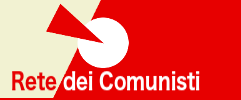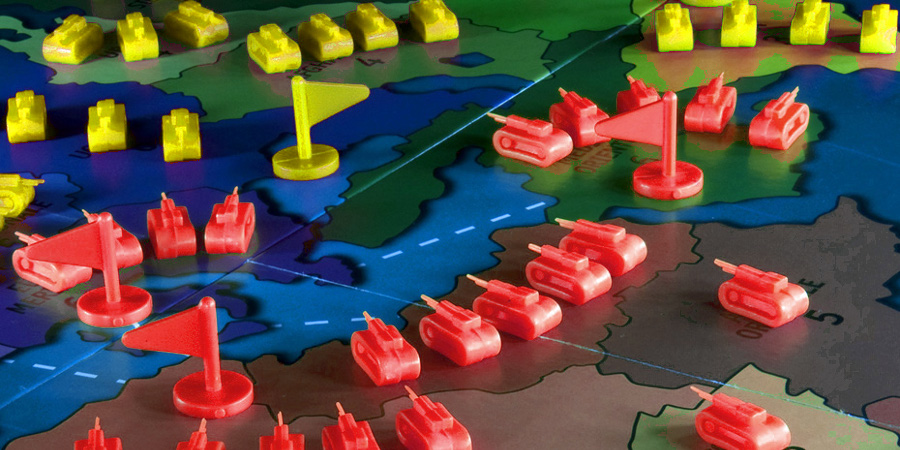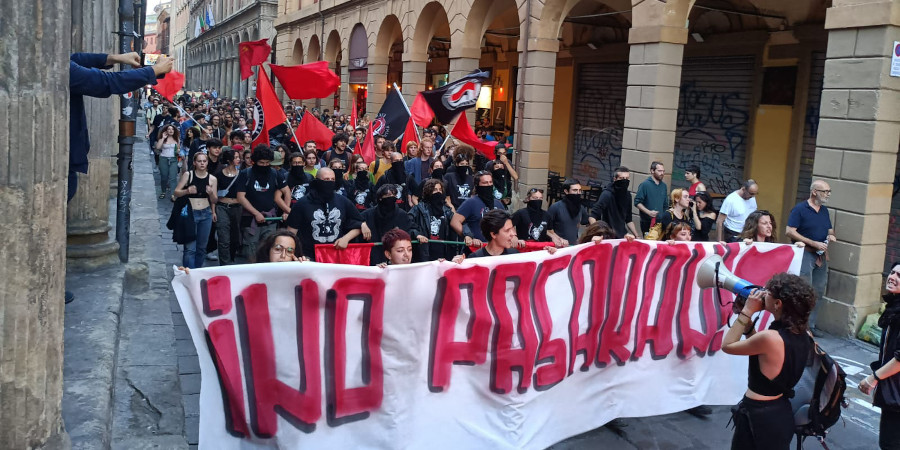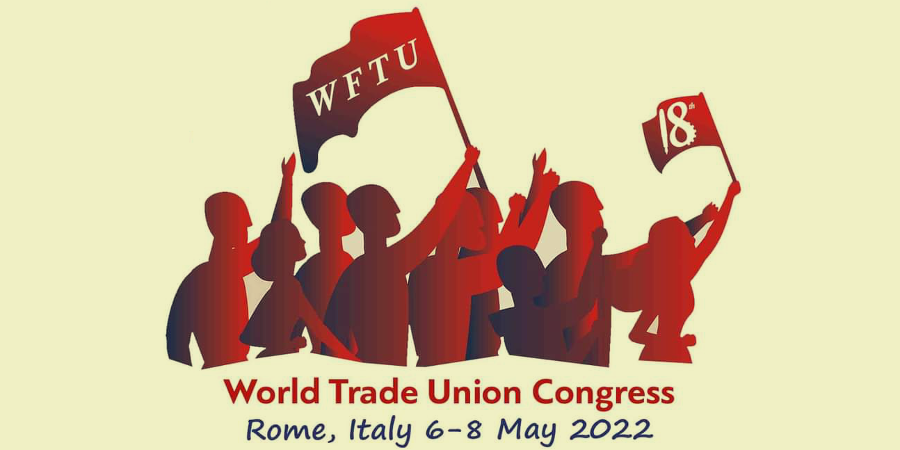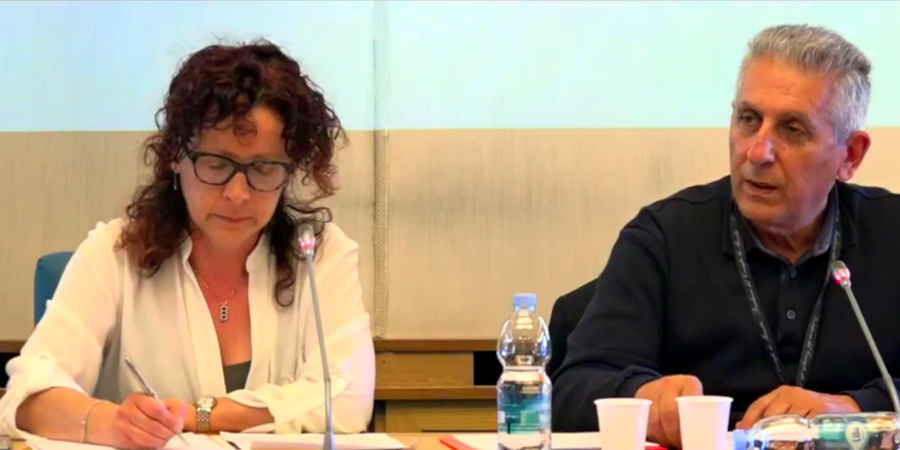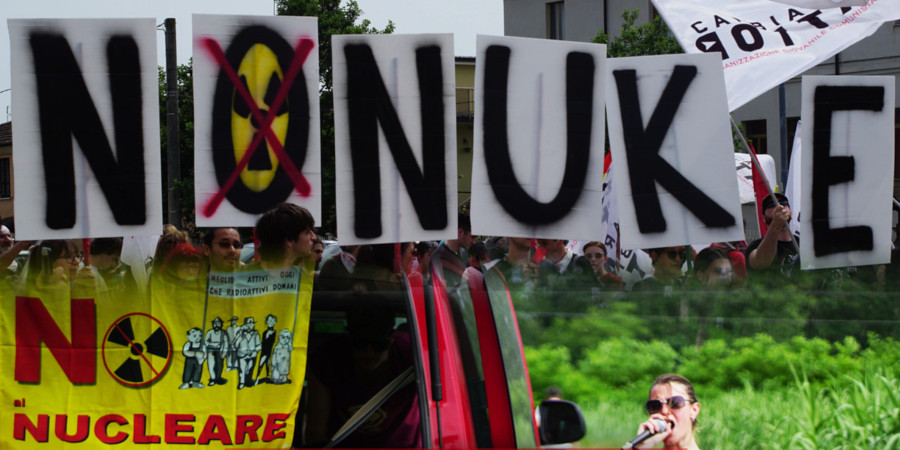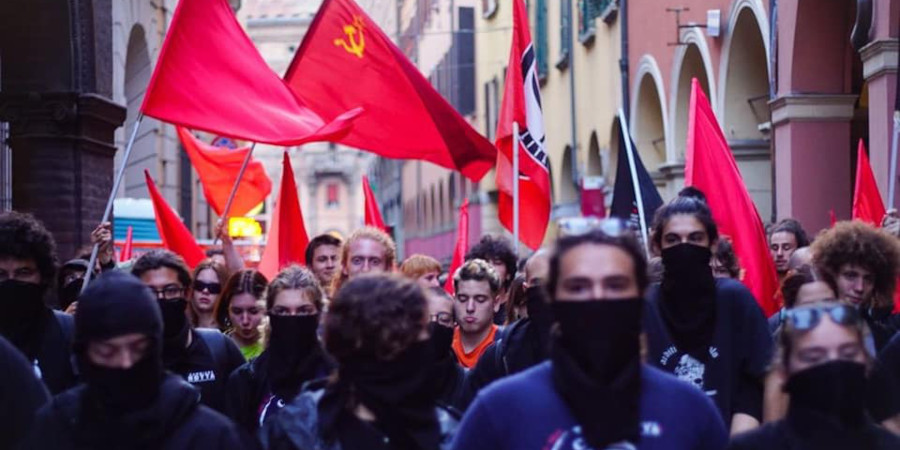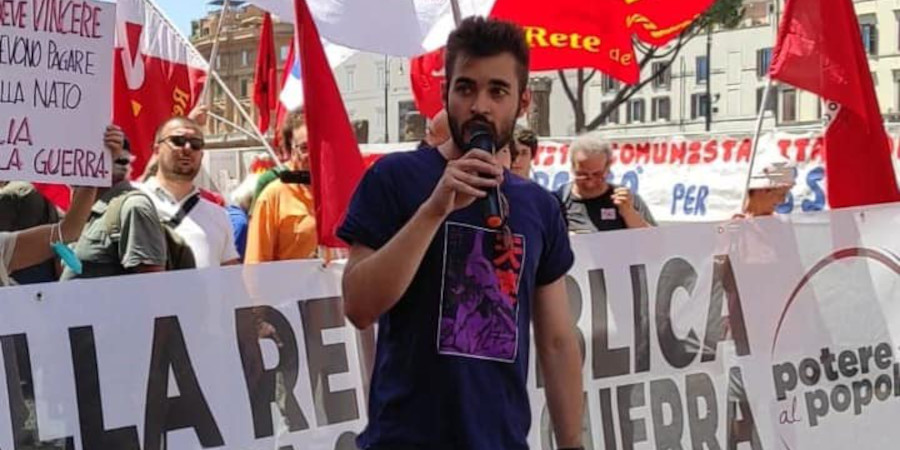| english | español | français | italiano |
Mauro Casadio
Stalemate as an accumulation of contradictions
If we are called upon to make an analysis of the current situation, we risk being biased if we do not analyse the conditions that led to the present day. Thus, in order to describe the dynamic that now leads to the ‘formalisation’ of the current contradictions, we must briefly outline the path taken by these in the last decade.
Certainly after the end of the USSR there was a phase of stability due to the possibility for capital to self-valorise using the enormous material spaces that had been created, including China, and the development of the productive forces caused by science and technology and the strong downsizing of the class struggle, from below, at the international level.
This ‘virtuous’ condition lasted until the financial crisis of 2007/2008, even though it was preceded by other moments of fall for finance, marking an initial change in the growth line, curving towards a more ‘flat’ trend; and in the past decade, this trend has become even more pronounced.
This state of affairs, characterised by a latent crisis, has not, however, called into question US hegemony and the international balance of power, but has caused potential competitors to grow, effectively leading to a stalemate in international power relations.
It should be made clear that by ‘power relations’ we do not mean eminently military ones but, in addition to these of course, we also mean economic, social, ideological, etc. relations, i.e. the overall development of the various players in the field.
The stalemate was brought about by structural factors that I will try to list in a concise manner, starting with a general concept that I believe is most useful in providing a strategic interpretation of the situation.
I am referring to the use of the term ‘capitalist mode of production’ rather than the term ‘capitalism’, which defines the specific features of different countries, their competitive relations, but relegates the overall dynamic to the background.
If until the end of the 20th century there existed a bipolar world made up of two antagonistic social systems, ’91 determined the potential of the globalisation of the MPC, which in the following thirty years actually materialised; in other words, the possibilities of extensive growth were ‘saturated’. The further potential to ‘capitalise’ other spaces is now residual compared to the already achieved size of the global market.
We have moved from the overproduction of goods in the 1970s to the overproduction of capital, with an enormous process of financialisation, thus allowing huge investments to occupy the productive spaces that have opened up since the 1990s. Faced with the limitation of market growth, which has gradually manifested itself, the available money supply tends to reproduce and enhance only in the financial and speculative dimension. Hence the frequent financial crises and speculative bubbles.
Within the growth of this abnormal financial mass, the monopoly position of the dollar is undermined over time; paradoxically, the first act was the birth of the Euro, i.e. the NATO allies, breaking a de facto situation that had been going on since 1971. Subsequently, the Chinese currency and a proliferation of crypto-currencies became established as a symptom of the steady and consistent erosion of the US monetary monopoly.
A huge increase in the organic composition of capital in production worldwide. This has produced a series of effects on a scale never before experienced historically; the growth of fixed capital in production has been matched by the reduction of the necessary FL. The process that began in the imperialist centres now reaches what were once the productive peripheries that are no longer such; see precisely China.
In economic terms this means a shrinking of the markets for goods, even those within the imperialist countries, caused by the worsening of the working and living conditions of the subaltern classes, who have had ever smaller percentages of the wealth produced worldwide.
A stalemate has also been reached in the military sphere where overall technological development (i.e. also available to relatively important countries) and the nuclear balance have so far prevented the extensive use of capital destruction by war. This has only been possible since the 1990s in limited forms in the dozens of more or less large conflicts that have been basically decided by the imperialist West.
“Last but not least” the environmental limit and the finiteness of the planet come into direct contradiction with a globalised capital tending towards infinite growth and thus forced to force that insuperable objective limit. This is the reality in spite of the ideological mystification that is made about environmental defence and on which the EU has built its international political image, which is actually quite tarnished today.
The evolution and worsening of these basic contradictions of the MPC has proceeded in a karst way, particularly over the last decade, producing increasingly strong frictions, but which the forces in the field (state, business, political) have contained in order to avoid a conflict from which would have emerged a rupture in the international balance, still dominated by the US, producing a clash with uncertain outcomes, as we are indeed seeing.
End of stalemate, geopolitical reflex and war
The combination of these contradictions has worked systematically and is producing a qualitative leap in the situation that is now before the eyes of the whole world. We can say in summary that the historical rupture underway (we are still at the beginning of its potential) is of the same depth as that which occurred with the end of the USSR, but of the opposite political sign.
The symptom of the point of ‘saturation’ reached was the flight from Afghanistan of the USA and NATO, i.e. of the entire West. Defeat that was not military, the Taliban did not have the strength, nor is it comparable to the flight from VietNam where the clash saw the military and nuclear powers of the time, the USA, the USSR and China, directly on the field.
It simply became apparent that it was impossible for the US, despite the absence of strategic antagonists, to sustain the goal it had set itself for the 21st century, namely to maintain and grow its world hegemony.
The impossibility of practising such an objective has thus become apparent, and the wars waged in the Middle East since ’91 to secure its control have all failed, as the US did not concretely have the material strength to maintain that role.
Actually, for the Westerners that limitation was already evident and was in some way formalised at the G7 held in June ’21 in Cornwall, where the Western recomposition, in the all-out confrontation with China, was evident; so much so as to theorise an Atlantic ‘democratic silk road’ in opposition to Chinese growth and the possibilities of autonomous growth in Asia.
In short, the Afghan fiasco showed this loss of power for the continuity of the unipolar project, bringing out into the light of day all the contradictions hitherto hidden due to a common will and balance of power.
It was this strategic retreat made in Asia and the need for NATO to consolidate its control in the West, with the extension of this to the East, that produced the Russian intervention in Ukraine, raising the stakes and challenging the EU and the US also on the nuclear level and thus also formally breaking the stalemate.
In a way, he has revealed himself to be a ‘naked king’ who cannot do with Russia what he has done in the past with Yugoslavia, Iraq, and Libya.
So the Ukrainian events have to do with the rebalancing of power relations on a global level. A rebalancing that opens a phase, we do not know how long, of confrontation and international chaos.
Without going into too much detail, and describing the dynamics albeit crudely, what is emerging is a confrontation between the Euro-Atlantic area and the Eurasian area (with Europe seemingly acting as pivot and friction), where, however, the subjects most in difficulty strategically are the historical imperialisms of the Western world.
In the wide-ranging confrontation that is opening up, far beyond the specific events in Ukraine, the cause of the difficulty stems from the structural fact that the potential for growth is almost all in the hands of the theorised Eurasian area.
This is due to the size of the market and population, the fairly advanced technological level achieved especially in China, the overall military potential with Russia, and natural resources. Elements all to the advantage of this substantial part of the world that could aspire to independent growth from the West.
On the other hand, the Euro-Atlantic area would have much narrower margins for growth, with internal contradictions in both Africa and Latin America and with a balance to be found between the US and the EU, which are in any case competitors even if not antagonists.
This both in monetary terms – the Euro is a separate reality from the Dollar – and in the redefinition of relations within NATO, within which the EU intends to develop its own military capacity.
Alongside these two areas, there is also a crumbling of what used to be Western alliances, from the Arab Emirates to Turkey and others, tending to redefine their own interests beyond what were until yesterday international alignments.
Crisis and demondialisation
The many possible analyses and hypotheses, which can be directed in various directions, will have to be verified in the future developments of a historical change that has actually only just begun. So we are ‘allowed’ to make hypotheses and bets on scenarios while being clear about their relativity.
There is, however, one fact that is already clear, if we take the point of view of the MPC and not of the individual competing ‘capitalisms’; that is, the conditions for growth commensurate with the size of world capital and its need for valorisation are no longer there, unless we move towards a generalised and probably nuclear war. But this is a prospect now premature to investigate.
The partial growths that are possible in the present state of affairs – we are talking about the mass of capital and the profit rates – may be the product of an accentuated exploitation of labour power and nature, understood in modern terms, but also of the clash and competition of interests that are being constituted as financial-economic-state blocks. This is a perspective that certainly does not induce optimism.
As mentioned, the unipolar phase of globalisation seems to have to be followed by the establishment of blocs/alliances in multipolar competition with two main players, but also with other countries attempting to follow autonomous paths suited to their own interests, beyond the possible alignments.
In this scenario, represented here rather succinctly, the specific aspects of the various players in the field are left out, particularly the nature of the states that refer in some way to socialism, i.e. China, other countries in Asia, but also those in Latin America.
The condition we now face with the defeat of the USSR – understood not as a concrete and contradictory experience, but as a possibility of an overall social alternative – is that the dynamics of the MPC have fully asserted themselves worldwide, which leave no room for the mediation of interests; especially today, when the world limits of such growth have been reached, from which one can only regress.
Certainly. the Chinese Communist Party has used this mode of production for its own overall growth while leaving the political system unchanged, certainly succeeding in doing so at least in part; but this is a test to be made to understand whether it will be the dynamics of capital that in the long run will condition the country’s strategic choices.
We are therefore going through a regressive phase due to the material limitations listed which, even if it does not necessarily lead to an immediate conflict (NATO over Ukraine sends weapons, but does not intervene and merely makes that population fight on behalf of others), in the future may very concretely contemplate a nuclear conflict.
This mode of production, in fact, does not envisage general and emancipatory solutions, but only competition to its ultimate consequences; as, moreover, Von Der Leyen reminded us several times when she said that the EU must hold its own in a hyper-competitive world.
Changing conditions for the EU
The change in world balances and the end of the unipolar ‘static’ phase inevitably affects the long process of building the European Union, acted upon by the dominant groups over time consistently and in relation to the developments that have occurred from time to time in the various steps.
It is no coincidence that when comparing the general picture of the early 1990s with the present one, the only constant that remains and does not regress is the construction of this new state entity, albeit in forms that are not yet final.
Yet there have been many serious obstacles in the decades of construction. Starting with the financial crisis of 1992 and the Maastricht agreement that began the deconstruction of the welfare state, and then the birth of the Euro, which the Cassandras of the right and left practically gave up for dead.
The financial crisis of 2007/2008, the Greek sovereign debt crisis that reflected a continental difficulty in particular of the so-called PIGS, the start of Quantitative Easing managed by Mario Draghi of the ECB, the Ukraine crisis of 2014 – where the EU supported the coup d’état – and finally the pandemic, often read as a further verification of the EU’s impotence.
In reality, it was precisely in this last phase that the EU scored serious points on the economic front, beyond the purely health aspect of vaccines that revealed, instead, the structural crisis of public assistance.
It took the opportunity to create a first step towards a common European debt, which was strongly opposed by the northern European countries, strengthening the Euro in the world market as a side effect, and set about centralising Europe’s industrial structure.
The NRP represents this perspective by aiming at a continental restructuring of production, bringing back and shortening the production chains in the European, Mediterranean and North African area, which can also be controlled militarily by the EU.
Finally, an attempt was made to give an environmentalist veneer to energy policies, which in reality was quickly ‘peeled off’ in the face of the winds of war coming from Ukraine.
In short, the periodic crises that have occurred over the last thirty years have actually been the ‘petrol’ with which the EU has travelled.
There is no doubt that the precipitating war situation in Europe once again creates a condition that forces the EU’s ruling groups to redefine their role in international relations and in the internal political and social hold.
In fact, the question of a European army has been on the table for some time, the need for it is recognised in order to give the EU a stronger role in the global context, but so far there have been very few concrete choices in this sense.
What is happening is therefore certainly a difficulty but also an opportunity to be reckoned with, and the increase in military spending to 2% is a prime example of this.
Returning to the general picture given above, the United States needs to strengthen its Atlantic sphere of influence, which on the one hand has to reckon with the ‘external’ enemy, i.e. Russia, which is projected towards a strategic agreement with China, but also with the other Asian states.
India, Iran, Kazakhstan and the former Soviet Central Asian republics and even Taliban Afghanistan are the relations that are being woven at an economic level; the example of the agreement between India and Russia on coal is significant, and diplomatic, with a speeding up produced by the manifest Western impotence in that area.
But there is also the need to re-dimension the autonomy of the EU both politically and economically; not forgetting that the resilience of the Euro still represents a limit to the strength of the Dollar, especially at a time of multiplying currencies and crypto-currencies, as a means of exchange and international reserve.
The current military crisis is exactly the product of these American needs, which are once again aiming to ignite a conflict in Europe by leaving American territory out once more.
This game had already been played in the 1980s with the Euro-missiles, where basically the classic ‘two birds with one stone’ were killed, containing the USSR on the one hand and crushing the ostpolitik of Willy Brandt’s Germany on the other.
Of course, this American ‘game’ today is a kind of repetition compulsion, but it falls into a completely different context, and it is by no means certain to have the same outcome as in the 1980s.
The EU has long been saying that it intends to be a power capable of sustaining an era of hyper-competitiveness; declarations to this effect multiplied in the months leading up to the war.
So the hurdle for the EU to overcome is how to stay in NATO, if only because of the military disparity with the US, by becoming an equal debating partner with its obligatory overseas interlocutor, given the international context.
What is being presented to the EU is another test on the road to its ‘certification’ as a fully imperialist unitary subject. A test whose outcome, at present, is by no means a foregone conclusion, but which lies in the logic of building a ‘new’ world competitor.
This implies a substantial rearmament with decreasing social spending, which is already in place, the use of fossil energy resources, as Draghi declared, the revival of nuclear power stations, etc.
In short, all the EU pacifist and environmentalist rhetoric and social rights rhetoric is skipped, undermining those political and social spheres that believed in and supported this hypothesis, starting with Greta Thunberg’s vexed and pampered movement.
Finally, the complete acceptance of Ukrainian immigrants, still leaving out those from Africa and Asia, dismantles another piece of the ‘goodist’ image on which they thought they were resting the ‘soft power’ of the old continent.
It is too early to make predictions on the outcome of this transition, because there are many possible scenarios, all susceptible to major changes based on the events that will unfold; but it is important to be clear about the EU’s tendency to establish itself as a world power. A power that in our opinion can only be imperialist in character.
